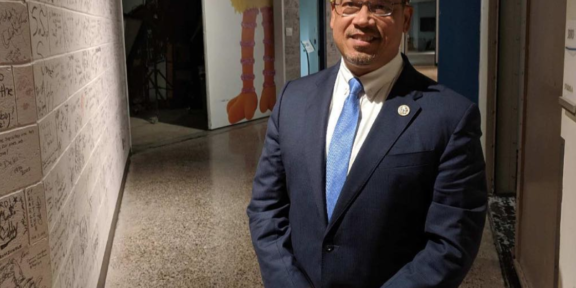“It wasn’t like it was hurting, it was just swollen. The next year around the same time, it happened again. Both times, I had to be on crutches. The second time around is when they started running tests on me. I don’t know how many times I had to get blood drawn and get blood tests. They couldn’t figure out what was going on”, said Angela Porter.
Porter is a sophomore, legal communications major who suffers from lupus. After a visit from the rheumatologists, Porter found out that she had a mild case of lupus. Lupus can affect all parts of the body from the skin to organs, joints, kidneys, blood and muscles. Like many other diseases, it can be hereditary and Porter’s father who is diagnosed with lupus is expected to have passed it down to Porter and her half-sister who experienced “flare-ups”. Those who can identify with the effects of lupus are grateful for the success of the Lupus Foundation of America’s walk. The Greater Washington Chapter of the Lupus Foundation of America, last spring, was fortunate enough to have a turnout of 500 participants. This year they are expecting many more with an estimated 1,000-registered people to walk on April 19th. The walk will take place between 12th and 13th street on Pennsylvania Avenue NW from 8:30a.m. – noon. “This chapter started doing walks last year and it was very successful [so] we’re doing it again for the second year this time,” said Tenny Flecther, president of the chapter.
Though the chapter has already received over $112,000 in donations prior to this weekend’s walk, they are still working toward their goal of $120,000. Participation in the 5K walk has no fee, but the effort manages to raise money from sponsorship and donations to aid the DC chapter in assisting residents living with lupus. “It supports everything that we do here at the Lupus Foundation of Greater Washington,” said Fletcher. The chapter provides support groups and conducts a symposium for patients and families suffering from lupus. They are currently in the process of hiring a patient navigator to work with families and this service is paid for by the walk and other fundraising efforts.
“The walk is done in part to raise funds but also to raise awareness, because not enough has been done to find the causes of and the cure for lupus,” said Fletcher. Currently there is no cure for this chronic inflammatory disease. Unfortunately, it is an autoimmune disease, which means it forces the immune system to attack itself.
Fletcher also states, “we really work on educating the public and the health care profession so they are aware of the prevalence of lupus in this area so they can educate themselves and make the diagnosis more readily”. Fletcher stresses the importance of lupus awareness in Washington DC, because the city’s racial demographics push the prevalence of lupus in DC to great heights. Aside from 9/10 lupus patients being women, the disease is four times more prevalent in African-American women than Caucasian women.
Lupus can really be life threatening if it isn’t treated. Early detection, a healthy diet, exercise and awareness is most effective in controlling the disease.



